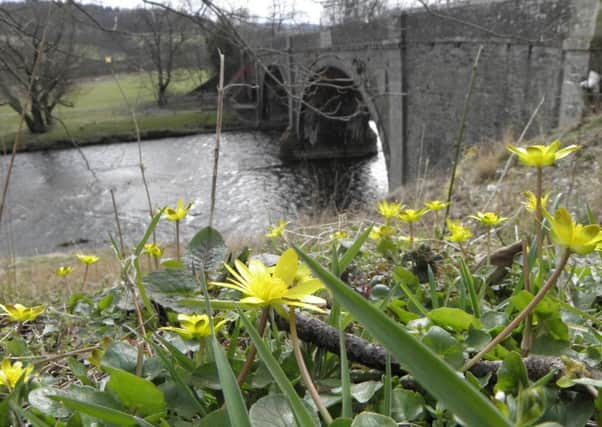Celandine was Wordsworth's favourite


It was pleasantly warm and the birds were singing loudly to try and get above the traffic noise of the nearby busy A7.
I was listening out for my first calling chiffchaff of the year, but to no avail. I’m sure they will be in full song before the end of the week.
Advertisement
Hide AdAdvertisement
Hide AdJust below the old Tweed Bridge, which is in a sorry state of repair, I saw one of spring’s real harbingers in full bloom – lesser celandines. I know that the snowdrops have been in bloom for several weeks, but the celandine is a true native, unlike the introduced snowdrop and I always look for its appearance with anticipation.
Its golden yellow, shiny petals only open when the sun shines, so to see it in bloom is doubly delightful.
It favours damp stream sides, woodland banks and in the shade of hedgerows, where its heart shaped glossy leaves can easily be seen before the rest of the vegetation gets going.
It is best enjoyed in the countryside, as any gardener will tell you, once you get it in the garden, it is virtually impossible to eradicate.
Advertisement
Hide AdAdvertisement
Hide AdIt is the floral equivalent of the swallow as both reappear around the same time and herald the coming of spring. In fact ‘celandine’ comes from the Greek chelidon meaning ‘swallow’ and it traditionally first blooms on February 21st, but is usually much later further north.
As a member of the buttercup family, it isn’t closely related to the greater celandine, which is a member of the poppy family.
Wordsworth’s favourite wild flower wasn’t the daffodil - it was lesser celandine. He wrote no less than three poems about it and even had it carved on his tombstone.
It was also known as pilewort, as it was used to treat haemorrhoids and its leaves are high in vitamin C and were used to prevent scurvy.
Advertisement
Hide AdAdvertisement
Hide AdThe Celts called it Grian (sun) as its petals close up before rain.
It is found throughout Europe and West Asia and it has now been introduced into North America.
On a completely different subject, I had a phenomenon last Sunday afternoon, which I think must be unique.
While watching the Scotland rugby game on TV, I had all five members of the tit family, native to the Borders – coal, blue, great, long-tailed, and marsh, visiting the half coconut outside my front window. Can anyone beat or even equal that? Let me know at [email protected]